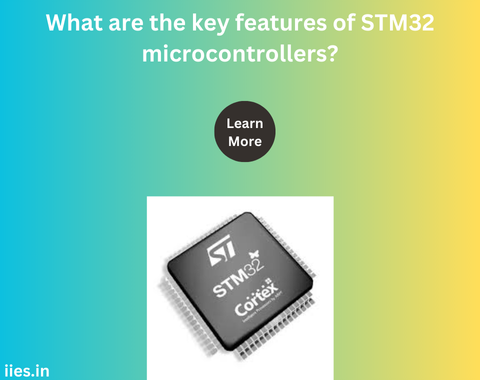
STM32 microcontrollers, developed by STMicroelectronics, have gained widespread popularity due to their versatility, performance, and comprehensive feature set. Catering to a broad spectrum of applications, from simple consumer electronics to complex industrial systems, STM32 microcontrollers are designed to meet diverse requirements.
Here, we explore the key features that make STM32 microcontrollers a preferred choice for developers and engineers.
STM32 microcontrollers are available in several series, each tailored for specific applications:
STM32 microcontrollers are based on ARM Cortex-M cores, ranging from the entry-level Cortex-M0 to the high-performance Cortex-M7. These cores offer various clock speeds, from tens of MHz to over 400 MHz, ensuring that there is an STM32 microcontroller suitable for any performance requirement.
One of the standout features of STM32 microcontrollers is their rich set of integrated peripherals:
For battery-operated and energy-sensitive applications, STM32 microcontrollers offer a range of low-power modes. The STM32L series, in particular, is optimized for low power consumption, featuring modes such as Stop, Standby, and Sleep, which significantly reduce power usage when the system is idle.
As security becomes increasingly crucial in embedded systems, STM32 microcontrollers incorporate robust security features:
STM32 microcontrollers are supported by a comprehensive development ecosystem:
STM32 microcontrollers offer a variety of memory configurations, including Flash, SRAM, and external memory interfaces. This flexibility allows developers to choose the right memory size for their application, ranging from a few kilobytes to several megabytes.
One of the significant advantages of the STM32 family is its scalability. Developers can start with a lower-end model and scale up to more powerful variants without extensive redesigns. Pin compatibility across certain series also simplifies hardware upgrades and design reuse.
STM32 microcontrollers are well-suited for real-time applications, featuring:
For IoT and wireless applications, STM32 microcontrollers include models with integrated wireless connectivity options like Bluetooth, Zigbee, and LoRa, making it easier to develop connected devices.
The STM32 microcontroller family stands out due to its broad product range, high performance, advanced peripherals, low power consumption, and strong security features. Supported by a robust development ecosystem, STM32 microcontrollers empower developers to create innovative solutions across various industries. Whether you’re designing a simple sensor node or a complex industrial control system, there’s likely an STM32 microcontroller that fits your needs perfectly.
Indian Institute of Embedded Systems – IIES